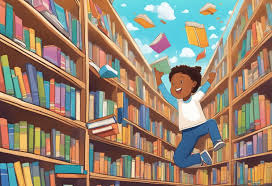Literacy development remains a fundamental educational priority, and the innovative teacher often explores diverse approaches to nurture reading and writing skills. Among these strategies, kids animated shows have emerged as surprisingly effective tools for literacy instruction, offering engaging contexts that motivate language exploration while building essential comprehension skills. This integration of visual storytelling with literacy education creates powerful learning opportunities that resonate with today’s visually-oriented students.
Educational research increasingly supports the strategic use of quality animated content in language arts curriculum. When teachers thoughtfully select programs with rich vocabulary, clear narrative structures, and age-appropriate content, they provide valuable language exposure that complements traditional literacy instruction. The multimodal nature of animation—combining visual storytelling, dialogue, text elements, and sound—creates comprehensive language experiences that address diverse learning preferences.
Vocabulary acquisition represents one of the most significant literacy benefits of well-designed animated programming. Quality shows naturally introduce new terminology in meaningful contexts supported by visual cues that aid comprehension. These authentic language encounters differ from isolated vocabulary drills, presenting words within narrative frameworks that illustrate meaning and usage. Teachers can extend these benefits by highlighting key terms, discussing their meanings, and encouraging students to incorporate new vocabulary in their own communication.
Reading comprehension skills develop naturally as children follow animated narratives. Story elements including character development, problem-solution structures, and sequential events in animated shows mirror the components students must recognize in written texts. Perceptive educators explicitly connect these parallel structures, helping students transfer their understanding of visual narratives to traditional reading materials. This scaffolded approach builds comprehension strategies through engaging content.
Prediction skills strengthen as viewers anticipate story developments and character actions during animated programs. Teachers can leverage this natural engagement by pausing episodes at critical moments, asking students to predict what might happen next and explain their reasoning. These discussions develop the same anticipatory thinking that supports reading comprehension, teaching children to use context clues and prior knowledge to make informed predictions about unfolding narratives.
Visual literacy—the ability to interpret and create visual messages—develops naturally through animated content. As children analyze character expressions, symbolic imagery, and visual storytelling techniques, they build interpretive skills applicable to illustrations in books, diagrams in informational texts, and multimodal digital content. This visual comprehension complements traditional text literacy, preparing students for increasingly image-rich communication environments.
Narrative structures featured in animated programming provide accessible models for students’ own writing development. When teachers explicitly identify story elements like character introduction, conflict development, and resolution strategies, they help children internalize these patterns for use in their own storytelling. This structural awareness transforms passive viewing into active learning about composition fundamentals.
Closed captioning offers additional literacy benefits when enabled during animated viewing. This text feature allows children to see words while hearing them pronounced correctly, strengthening the connection between written and spoken language. For emerging readers especially, this multisensory approach reinforces phonemic awareness and word recognition in engaging contexts rather than isolated exercises.
Genre awareness develops as students experience various animation styles and storytelling approaches. From fantasy adventures to historical narratives to informational programming, animated content spans diverse genres that mirror literary categories. Teachers can highlight these distinctions, helping students recognize how different types of stories follow unique conventions—knowledge that supports both reading comprehension and composition skills.
Critical literacy—the ability to analyze messages and identify perspectives—can be cultivated through guided discussions of animated content. By asking questions about character portrayals, story messages, and excluded viewpoints, educators help students become more discerning consumers of media and texts alike. This analytical approach transforms entertainment into opportunities for developing sophisticated literacy skills essential for our media-saturated world.
Digital storytelling projects extend literacy learning when students create their own animated narratives. Using simple technologies, children can develop storyboards, write scripts, and produce basic animations that demonstrate their understanding of narrative structures while integrating multiple literacy skills. These creative projects motivate writing practice through authentic communication purposes rather than arbitrary assignments.
Implementation strategies determine the educational value of animated content in literacy instruction. Rather than using animation as a reward or time-filler, effective teachers integrate it purposefully into language arts planning with clear learning objectives. This might involve previewing content, preparing guiding questions, and designing follow-up activities that extend literacy development beyond viewing experiences.
Assessment considerations should acknowledge both traditional literacy measures and broader communication skills developed through multimodal learning experiences. Beyond standardized reading assessments, teachers might evaluate students’ ability to discuss narratives orally, interpret visual information, create multimodal compositions, and transfer understandings across different media forms. This comprehensive approach recognizes the complex nature of modern literacy development.
In conclusion, when thoughtfully selected and intentionally utilized, animated programming offers substantial literacy benefits alongside its entertainment appeal. By explicitly connecting visual narratives to reading and writing development, educators leverage children’s natural engagement with animation to build essential language skills. As literacy education continues evolving to address multimodal communication environments, the strategic integration of quality animated content represents a promising approach for developing versatile, engaged readers and writers.

